![]()
![]()
![]()
Use LEFT and RIGHT arrow keys to navigate between flashcards;
Use UP and DOWN arrow keys to flip the card;
H to show hint;
A reads text to speech;
14 Cards in this Set
- Front
- Back
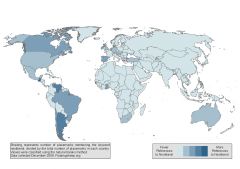
neo-liberalism
|
A philosophy of viewing the entire world as a single market. p.1135
Sig- This approach to the economy favored the reduction of tariffs, the free global movement of capital, mobile/temporary workforce, privatization of state-run enterprises, curtailing of gov't efforts to regulate economy, and both tax and spending cuts. Was the most effective means of generating the holy grail of economic growth. |
|

reglobalization
|
Dramatic quickening of global economic transactions after World War II. Expressed in the accelerating circulation of goods,capital, and people. p.1135
Sig- Skyrocketed world trade from $57 billion in 1947 to well over $13 trillion in 2007. Massive trade of goods which spread them around the entire globe. Money as well as goods achieved an amazing mobility. Also not to mention the massive migration of workers who were on the move in this rapidly globalizing world. |
|
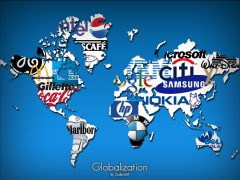
transnational corporations (TNC)
|
Huge global businesses that produced goods or deliver services in many countries simultaneously. p.1137
Sig- Were central to the acceleration of economic globalization. Having several different factories/corporations of one huge business greatly contributed to the massive globalization in which we experience today. By 2000, 51 of the world's 100 largest economic units were TNCs, not countries. Such corporations have been able to move their facilities quickly from place to place in search of the lowest labor cost or least restricting environmental regulations in the recent decades. |
|

North/South Gap
|
Split between the industrially advanced/richer North and the more backward/impoverish South. Defined the two as separate as they were largely different from each other regarding economy, politics, and industrialization. p.1137-1139
Sig- Due to the Gap (North having more opportunities), There was major migration from the South to the North, most notably the U.S and Europe. This allowed for the diversity of people that you see in these areas today more so in the U.S. The migrating workers provided a cheap source of labor for their adopted countries so it also affected the economy greatly. It not only included workers, but also refugees who were escaping an oppressive gov't or wars. |
|
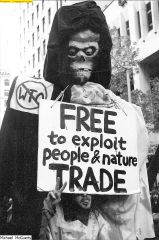
antiglobalization
|
Emerged in the 1990s, also know as alternative globalization ,or global justice movement as an international coalition of political activist, concerned scholars and students, trade unions, women's and religious organizations, and etc.
Sig- Made opposition to neo-liberalism a global scope. Beginning in 1994, southern resentment boiled over in the Chiapas rebellion, which featured a strong antiglobalization platform. It's leader, Subcomandante Marcos, referred to globalization as a "process to eliminate that multitude of people who are not useful to the powerful". Though economic globalization may have brought people together it has also divided them sharply. It has created huge gaps between people of powerful nations and the less powerful ones. Appeared dramatically on the world's radar screen in late 1999 in Seattle at a meeting of the World Trade Organization. |
|
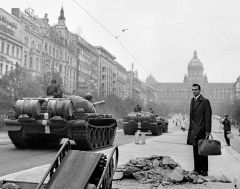
Prague Spring
|
Period of political liberation in Czechoslovakia led Alexander Dubcek. Who was a communist, but went against communist beliefs. p.1145
Sig- Initiated a sweeping series of reforms aimed at creating "socialism with a human face". Censorship ended, generating an explosion of free expression in what had been a highly repressive regime, along with various other reforms. This seemed to challenge communist rule itself. |
|

Che Guevara
|
Icon of third world ideology in the 1960s. He was an Argentine born revolutionary who had embraced the Cuban rev. and subsequently attempted to replicate it. p.1146
Sig- He had embraced ht Cuban revolution and subsequently attempted to replicate its experience of liberation through guerrilla warfare in parts of Africa and Latin America. He was a fervent anti-imperialist which made him popular among Western radicals. |
|
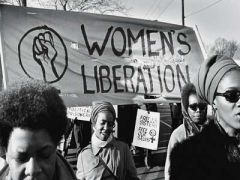
second-wave femisnism
|
Occurred during the 20th century as feminism began to globalize. Had organized efforts to address the concerns of women. p. 1146
Sig- Concerns of women took shape around the world. Communist gov'ts in various countries mounted vigorous efforts to gain support of women and bring them to the workforce by attacking major elements older patriarchies. Second wave feminism focused largely on employment and education rather than voting rights. These feminist movements has greatly affected us in this modern era as women have come a great way in showing that they more or less are equal. |
|
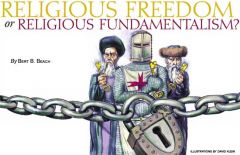
fundamentalism
|
Response to the modernization of religion. A militant piety-defensive, assertive, and exclusive-that took shape to some extent in every major religious tradition. p.1151
Sig- Many features of the modernizing world seem to threaten established religion. Scientific and secular focus of global modernity directly challenged the core beliefs of supernatural religion. Fundamentalist sought an alternative modernity, infused with religious values. Fundamentalist promoted religion which isn't a bad thing, but in was the means they used which greatly discredited them. |
|

Hindutva
|
Hindu fundamentalist movement in India that took shape during the 1930s. p.1152
Sig- Like American fundamentalism, it represented a politicization of religion within a democratic context. The movement took political shape in an increasingly popular party called the Bharatiya Janata Party (BJP). They became a major political force in India utilizing Hindutva, promoting a distinctive Hindu identity in culture, education, and religion. |
|
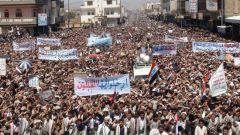
Islamic renewal
|
Islamic fundamentalism that emerged in the late 20th century. An effort to create a new religious/political order centered on a particular understanding of Islam. p.1153
Sig- This Islamic renewal gained strength from the enormous disappointments that had accumulated in the Muslim world by the 1970s. It's leading figures insisted that the Quran and sharia (Islamic Law) provided a guide for life and a blueprint for a distinctly Islamic modernity not dependent on Western ideas. Such ideas echoed loudly throughout the Islamic world and found expression in many ways. |
|
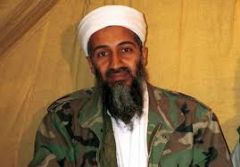
Osama bin Laden/al-Queda
|
Osama Bin Laden was a wealthy Saudi Arab, as well the founder of the Islamist group al-Queda (meaning the base in Arabic). p.1156
Sig- They issued a fatwa (religious edict) declaring war on the U.S in 1998. Elsewhere as well, al-Queda/groups associated with it launched several attacks on Western interests.Their greatest enemy was irreligious western style modernity, U.S imperialism, and an American led economic globalization. Also not to mention, the destruction of the World Trade Center on September 11, 2001; will be etched in Americans' memory forever. |
|

Global warming
|
Caused by the vastly increased burning of fossil fuels, as well as the loss of trees that would otherwise remove carbon dioxide from the air, had begun to warm the atmosphere significantly. p.1160
Sig- If global warming continues, at this rate, the glaciers and polar ice caps may melt, which will result in a rise in sea level. Also not to mention the thawing permafrost, extreme weather such as hurricanes, further specie extinctions, and along with various other ecological threats. This is a global phenomenon and for many people, including me demands global action, or else life as we know it may be doomed. |
|
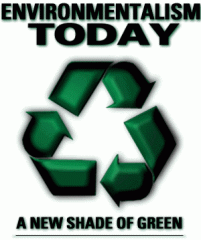
environmentalism
|
Began in the 19th century when Romantic poets denounced the industrial era's "dark satanic mills", which threatened the "green and pleasant land" of earlier England. "Scientific management" of nature. p.1161
Sig- Represented element of emerging environmental awareness. Along with the "wilderness idea" which aimed to preserve untouched areas from human disruption. Not until the second half of the 20th century did it gain rapid support to the point of worldwide dimensions. Environmentalism seeks to not only protect nature, but also the heath of people and the survival of countless other species. |

